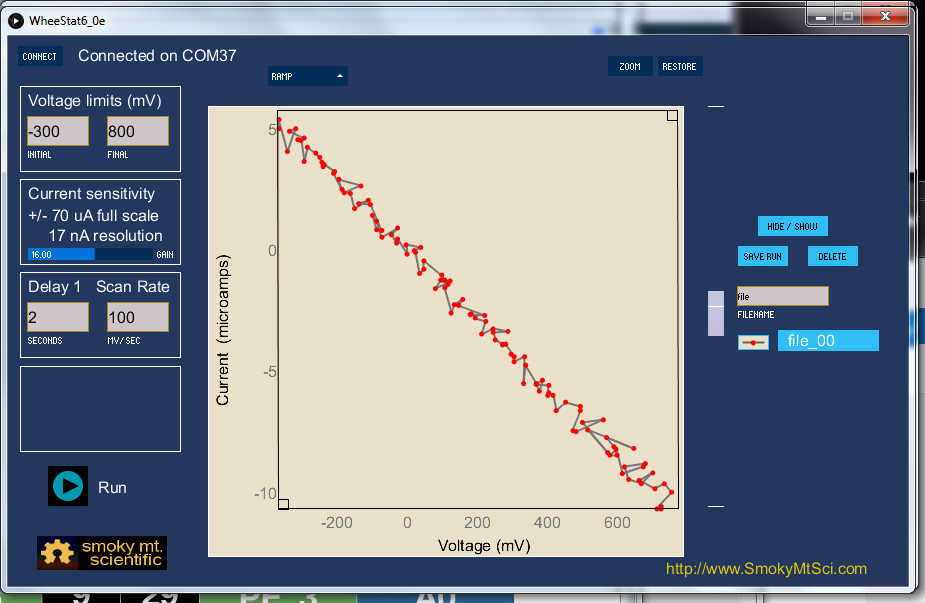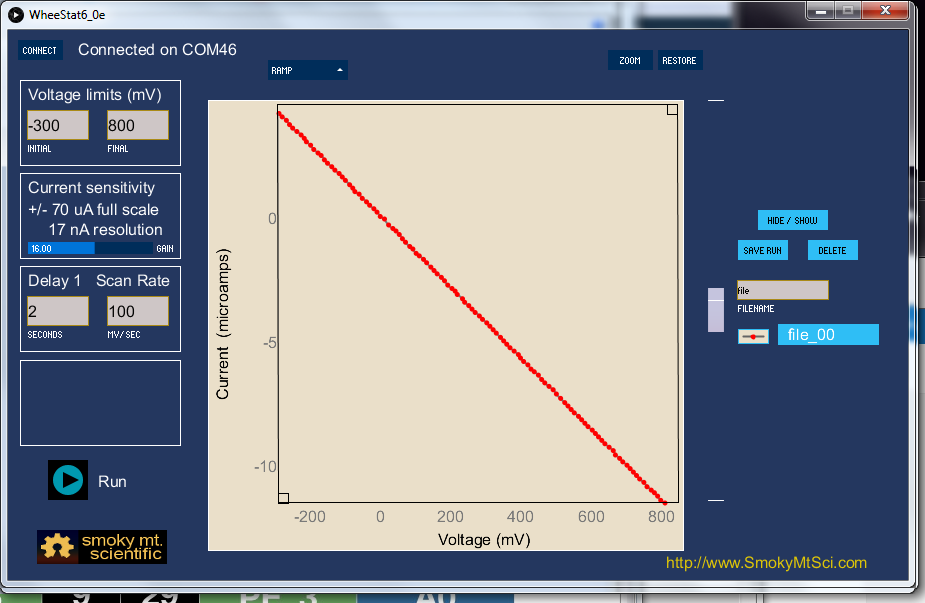Other Parts Discussed in Thread: ENERGIA
The non-profit I work for (Smoky Mountain Scientific, smokymtsci.com) develops and sells low cost, open source instruments for science education. One of our instruments incorporates a Tiva-C launchpad that outputs a pwm voltage and measures voltage and current passed in electrochemical reactions. I recently purchased 100 Tiva launchpads from Mouser and I am having trouble with noise in the analog read channels for about 1/4th of the boards. We have been building and selling these instruments for a couple of years now and have never had this problem before. To test the boards, I send a pwm signal through a simple low pass filter (a resistor and a capacitor) then read the output on two channels (A11 and A8). The attached figures show examples of output from a good (file Board46) and a bad (file Board37) boards as displayed on our user interface. I put the apparatus together on a grounding mat and then plug the usb connector into my computer to flash the microcontroller and do the testing. I have posted a description of this on the 43oh web site (forum.43oh.com/.../ and have contacted Mouser about it. Mouser said that I needed to bring the problem to the e2e forum before they could do anything. Any recommendations?
Thanks,
Jack




